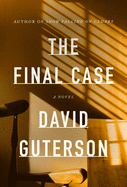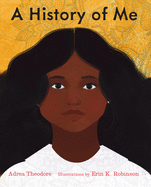Natalia_Weedy.jpg) |
| (photo: Natalia Weedy) |
Mesha Maren's 2019 debut, Sugar Run, took almost a decade to hit shelves. In the meantime, she published short stories in various prestigious journals (the Oxford American, the Southern Review) and won numerous prizes and fellowships (2015 Thomas Wolfe Fiction Prize, MacDowell and Ucross residencies). Maren's sophomore novel, Perpetual West (Algonquin, January 25, 2022), introduces a young couple from West Virginia hoping to establish new lives on the El Paso/Ciudad Juárez border.
Sugar Run--murder, prison, domestic abuse, long-gone fame, family dysfunction, and, of course, love. And now Perpetual West--transracial adoption, borders, academia, lucha libre, activism, addiction, God. Well, wow. Where do these stories come from?
For me, both plot and themes, like the ones that you pointed out, are actually the last aspects of the book that I focus on. What comes first are the images and then the characters. With Sugar Run I began with an image of a curtain blowing in an open window and a glass of melting ice and whiskey on the windowsill. I asked my brain to expand the lens a little. When I opened the frame, I realized that it was a window in a motel room and two women were there.
With Perpetual West, I began with the image of the border station, the clogged chaos of the road going south into Juárez, and the incident with the groceries that occurs at the opening of the book. I knew there were two people in the car, but it took me a while to figure out who Elana and Alex were. I also had this feeling that there was a third very important person on the other side of the border. That ended up being Mateo.
Both novels are so much about place. How did Perpetual West land at the El Paso/Juárez border?
Place is very important to me in my life and in my writing. West Virginia is home for me. The only other place that has drawn me in like West Virginia is the landscape right around El Paso, Texas, and Ciudad Juárez, Chihuahua. I moved to that area when I was 21. I was following a woman who I was in love with. She was participating in a study abroad program where she lived in Juárez and took classes at the University of Texas El Paso. I lived mostly on the El Paso side and worked with an organization called La Mujer Obrera, a community organizing center that formed after NAFTA, when the garment workers in El Paso lost their jobs. I crossed the border into Juárez multiple times a week and became fairly familiar with both sides of the border. While I was living there, the woman I was in love with ended up leaving me for a punk activist and up-and-coming wrestler. I moved away from the area after nine months, but I always knew that I wanted to return and write about both my time there and the landscape. Years later when I began to seriously draft what would become Perpetual West, I actually found the wrestler who I had lost my love to and we reconnected on Facebook. He was generous and gracious and ended up helping me learn about the wrestling world in both Juárez and Mexico City.
I found an article you wrote in 2020 about West Virginia's wrestling scene. Did interest in lucha libre come first, or local wrestling?
I've been fascinated by wrestling ever since I was a kid and went to a few very small local matches in West Virginia. Juárez was the first place where, as an adult, I spent time around wrestling communities and it reignited my interest.
I actually studied wrestling while I was writing the first draft of Perpetual West. I was living in Carrboro, North Carolina, and I suddenly felt so physically distant from the matches I had seen in Mexico and the matches from my childhood. In order to write Mateo's chapters, I had to know on a physical level what the ring feels like. I signed up for classes at the Firestar Pro Wrestling School in Greensboro and it was such a wonderful experience. My goal was not to actually become a wrestler or even be any good at wrestling but to feel some of the same physical feelings that Mateo would feel, and the owner of the school was very open to that. He did however tell me, at a certain point, that I was likely going to give myself a concussion and then I wouldn't be able to write my novel at all, so I did more observing rather than actually wrestling.
Did you ever feel uncomfortable writing about a closeted transracial adoptee desperate to reconnect with his Mexican heritage? And what about creating Mexican native Mateo on the page?
Yes, of course, I think that if I didn't have any concerns or fears I would be out of touch. I had and have lots of concerns. What I try to do with those concerns is put them to work on the page, utilize them to force myself to dig deeper and look closer. There is this incredible essay by Kwame Dawes ["Back to Empathy"] that I really relate to, where he talks about empathy as a function of the imagination.
My process is to use my concerns and fears to drive my research and writing. My fears disallow me from becoming lazy and thinking that I prematurely understand a character. I think fear and unease can be a writer's best friend. Feeling comfortable and at ease doesn't always produce the best writing.
You're a creative writing professor at Duke and an NEA Writing Fellow at a federal prison in West Virginia. That must be a rather polemic experience, moving between the privileged and forgotten. How do you manage such diverging spheres?
These two disparate teaching experiences inform and enrich each other. I taught creative writing in various state and federal prisons before I ever taught in a university setting; I think the wide range of students who I came into contact with in the prison classrooms was one of the best preparatory experiences I could have ever asked for. I had to leave all my assumptions at the door when teaching in prison because my classes were such a mixture. I have had students with PhDs or multiple master's degrees alongside adult students who learned to read and write while in prison, students who never finished high school but have written several novels. This experience prepared me to meet each and every student exactly where they are, to find out why they signed up for my class, what they want from the class and then try to help them achieve that. Strangely enough, that carries over very well in an environment like Duke. I learned to set aside assumptions and look instead at the writing that each student submitted, and then help them build from there. --Terry Hong
 When Harvard Business School professor Tsedal Neeley began writing Remote Work Revolution: Succeeding from Anywhere (Harper Business, $29.99) 20 years ago, she had in mind global companies that successfully united work forces worldwide. Little did she know that a pandemic would lend her discoveries and best practices a sense of urgency at the national, local and personal level. Her book, offering ideas on inclusiveness, crossing cultural and language barriers, and encouraging all voices in the virtual room, closes each chapter with an "action guide" of practical tips.
When Harvard Business School professor Tsedal Neeley began writing Remote Work Revolution: Succeeding from Anywhere (Harper Business, $29.99) 20 years ago, she had in mind global companies that successfully united work forces worldwide. Little did she know that a pandemic would lend her discoveries and best practices a sense of urgency at the national, local and personal level. Her book, offering ideas on inclusiveness, crossing cultural and language barriers, and encouraging all voices in the virtual room, closes each chapter with an "action guide" of practical tips. The dividing line between your house as a gathering place for both family and friends as well as (virtual) colleagues can be elusive. How does one step away from the desk for a lunch break or to walk the dog, and return to it somewhat refreshed and reinvigorated? Catherine Price offers some ideas in The Power of Fun: How to Feel Alive Again (Dial, $27) with her emphasis on smaller moments of playfulness ("Everyday Fun") rather than going for the kind of "Peak Fun" associated with the (sometimes unrealized) goal of saved-up-for faraway vacations. She emphasizes the importance of continuing to learn and grow in incremental ways--beginning with stepping away from technology.
The dividing line between your house as a gathering place for both family and friends as well as (virtual) colleagues can be elusive. How does one step away from the desk for a lunch break or to walk the dog, and return to it somewhat refreshed and reinvigorated? Catherine Price offers some ideas in The Power of Fun: How to Feel Alive Again (Dial, $27) with her emphasis on smaller moments of playfulness ("Everyday Fun") rather than going for the kind of "Peak Fun" associated with the (sometimes unrealized) goal of saved-up-for faraway vacations. She emphasizes the importance of continuing to learn and grow in incremental ways--beginning with stepping away from technology. Jenny Odell describes her book How to Do Nothing: Resisting the Attention Economy (Melville House, $17.99) as "a field guide to doing nothing as an act of political resistance to the attention economy." She uses the principles of the Eight Hour Day Movement--"eight hours for work, eight hours for sleep and eight hours for what you will"--to remind readers of the importance of consciously setting aside time in the day to pay attention to a piece of art, stroll through a neighborhood park, and connect with the people around us and who matter to us. --Jennifer M. Brown, senior editor, Shelf Awareness
Jenny Odell describes her book How to Do Nothing: Resisting the Attention Economy (Melville House, $17.99) as "a field guide to doing nothing as an act of political resistance to the attention economy." She uses the principles of the Eight Hour Day Movement--"eight hours for work, eight hours for sleep and eight hours for what you will"--to remind readers of the importance of consciously setting aside time in the day to pay attention to a piece of art, stroll through a neighborhood park, and connect with the people around us and who matter to us. --Jennifer M. Brown, senior editor, Shelf Awareness




Natalia_Weedy.jpg)
 Thich Nhat Hanh, the Vietnamese Buddhist monk "who was one of the world's most influential Zen masters, spreading messages of mindfulness, compassion and nonviolence," left his body on January 22 at age 95, the
Thich Nhat Hanh, the Vietnamese Buddhist monk "who was one of the world's most influential Zen masters, spreading messages of mindfulness, compassion and nonviolence," left his body on January 22 at age 95, the 










